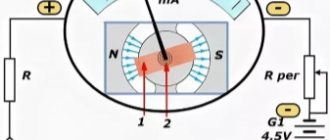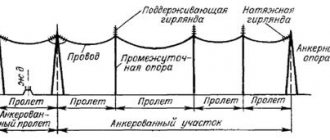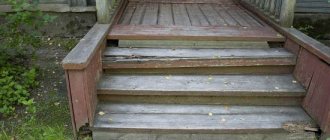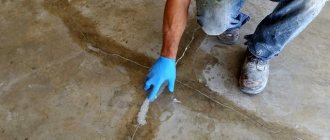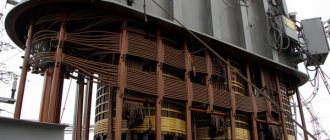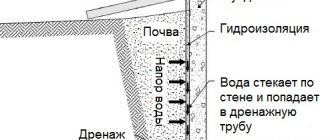Pothole repair is a process of restoring the road surface, which involves spot repair work. Depending on the situation, different methods can be used, for example, application by pneumatic spray, jet-injection and others.
But in all cases the principle is similar - preparing the hole, filling it with a special compound and waiting for it to harden (leveling). To speed up the process, machines are used that can significantly optimize the work process. Below we will look at the technology and operating features in more detail.
Pothole repair, in what cases it is used
The need for pothole repair of roads arises when the surface wears out and various types of defects appear on it. The cause of damage may be poor-quality asphalt, low level of contractor responsibility, harsh operating conditions and other factors. The most destructive impact on asphalt is caused by heavy transport, which quickly breaks down existing defects.
To avoid such problems, signs are installed on the roads that limit the weight of a car. But they don't always work. Not all companies comply with the rules, because the main goal is to make a profit.
For this reason, the tonnage is almost always exceeded, and routes are laid along the shortest sections, which are broken up the most. Another cause of damage is the poor quality of the materials used and insufficient compaction.
Patching of the coating is carried out in certain areas with the greatest defects. The purpose of the work is to prevent further destruction of the road and extend its service life. The popularity of this method is due to the following factors:
- Relatively low cost of work.
- Availability of raw materials for repairs.
- Availability of several recovery technologies.
- Possibility of using special machines, which speeds up the repair process.
- Carrying out work with the involvement of a minimum number of people.
- Restoration of a road section after laying/repairing underground communications.
Thanks to pothole repair, it is possible to eliminate local damage and avoid major work to restore or completely replace the road surface.
Filling potholes in a concrete floor
Repairing concrete floors begins with widening and deepening the pothole around the perimeter. It is better to use a grinder with a diamond blade for this.
- The cut is made 1 cm deeper than the defect. The pothole widens to the sides by 2–3 cm. If necessary, these figures are increased.
- Using a hammer drill or a hammer with a chisel, a recess is made at the site of the pothole; a rectangular depression should be obtained. If a hammer drill is used, it is better for strangers to move away.
- The recess is thoroughly cleaned with a vacuum cleaner and primed.
- You can fill the pothole after the soil has dried. The mixture is carefully leveled and pierced several times to remove air. You can use a metal pin or trowel. Level the surface using the rule.
USEFUL INFORMATION: How to lay parquet on a concrete floor: laying on a screed, all options
The depth of the pothole matters. If it is more than 5–6 cm, then the composition is poured in several layers. The maximum layer thickness is 2 cm.
- After hardening, they proceed to grinding. A building level will help you achieve a level concrete base.
It is recommended to carry out work wearing a respirator, safety glasses and gloves. Windows must be open during renovation. The floor can be coated with concrete paint, which will provide additional protection. It is selected specifically for residential premises. A floor repaired in this way will last a long time.
Pothole repair technologies
Depending on the situation, financial capabilities, road condition and available equipment, the pothole repair technology is selected.
Important
When performing work, the main task is to eliminate cracks and dips in the asphalt surface, remove existing holes and irregularities.
Below we will consider the main restoration methods that are used after the installation of utilities, the end of the road surface's service life, spot damage and the presence of other problems that complicate the operation of the road.
Pothole repair using pneumatic spray
One of the most convenient methods of pothole repair, which allows you to eliminate existing damage on the road using special machines. The work is carried out in several stages:
- Blowing out the damaged area under high air pressure. At this stage, the pit is completely cleared of debris and other types of contaminants before further processing.
- Spraying bitumen emulsion onto the walls and bottom.
- Injection of a composition with stone emulsion.
- Preparation of crushed stone and its mixing with the emulsion, followed by feeding into the recess of the road surface. Mixing occurs directly in the cavitator.
Supply of finer crushed stone to finish the top layer of the repaired coating. As a result, a rough layer is formed on the surface, characterized by increased resistance to mechanical stress.
The advantages of this method include high productivity, low repair costs and the ability to perform the entire range of work using one machine. There is no need for additional compaction with a roller, and immediately after hardening you can drive on the road.
Method of laying poured asphalt
The essence of the patching technology involves the use of a special mixture heated to a temperature of 190-250 degrees Celsius. When it is reached, the material reaches the required level of fluidity and becomes a mastic. Astringent qualities reduce or, conversely, increase the ability of mineral powder. With this method, the road surface can be used within 12 hours.
The essence of the technique is that crushed stone with a diameter of 0.5-1 cm is poured into a composition previously poured into the pit, after which manual leveling is carried out. When using materials with a high degree of viscosity, this type of leveling is not suitable and special machines are used.
Delivery of cast asphalt is carried out using special transport - a thermos mixer. In the case of using special transport for laying asphalt, the material from the kocher is sent to the bunker.
The advantages of the technology include the use of cast concrete on uneven areas, on surfaces with complex configurations or on old road surfaces. When patching, special thermos mixers are used, which are designed for preparing and laying the finished composition. In this case, there is no need to compact the treated area.
Selecting a mixture for repairing a concrete surface
Before you start repairing the floor in an apartment with your own hands, you need to prepare a mixture for restoring concrete surfaces and structures. They are presented in large quantities in construction stores. In order to choose the right brand of mixture, you need to determine the degree of damage to the concrete surface:
- First degree - there are cavities and shrinkage cracks.
- Second degree – surface peeling, small chips.
- Third degree - cracks within 2 mm with a depth of no more than 40 mm.
- Fourth degree – cracks more than 2 mm, depth up to 10 cm.
- Fifth degree - large potholes and cracks, depth more than 20 cm.
USEFUL INFORMATION: How to screed a floor with expanded clay with your own hands: recommendations
The purpose of the repair mixture should be indicated on the packaging. Such manufacturers of mixtures for restoring concrete surfaces as Emaco, Birss, Ceresit, and Bars deserve attention.
You can use universal repair mixtures, such as Ivsil Render.
Since the price of special thixotropic compositions containing reinforcing microfibers and polymers is quite high, for a small amount of work the mixture can be prepared independently. To do this, take 1 part PVA glue and mix it with 4 parts water. Using this solution, using a construction mixer or a special attachment on a drill, mix the sand-cement mixture in a ratio of 1:3.
BCM-24.5 machine, technical characteristics and principle of operation
The most popular equipment is the BCM 24.5 pothole repair machine, which is a set of equipment for eliminating damage, restoring roads/sidewalks and other objects. Technical characteristics of the equipment:
- weight - 3.6 tons;
- dimensions - 4.76x2.5x2.13 m;
- track - 2.19 m;
- frame type - welded;
- brake mechanism - drum, driven by pneumatic and hydraulic principles;
- handbrake - mechanical;
- engine - MMZ D-243, 4 cylinders, diesel;
- battery - 6ST-77A, voltage - 12 V, 77 A*h;
- tank capacity - 91 l;
- compressor capacity - 0.15 cubic meters. m/min;
- Receiver capacity - 20 l.
The main supply transport systems deserve special attention:
- Air. It is carried out using a blower with a capacity of 21.5 cubic meters. m/minute and a maximum temperature of 82 degrees Celsius. This creates a working pressure of 0.08 MPa.
- Material. The process occurs using ejector/gravity technology using electro-pneumatic control.
- Bitumen mixture. It is supplied under pressure of 0.6 MPa from a tank with a capacity of 1000 liters. The size of the loading hatch is 40 cm. A 3 kW (2x1.5 kW) heating element is also provided, operating at 220 V. The temperature is controlled and maintained at 43-82 degrees Celsius.
In addition, the BCM 24.5 road patching machine includes the following elements:
- Unloading hose with a diameter of 9 cm.
- Flushing system using a solvent in the form of diesel fuel. The storage tank for this material has a volume of 36 liters. The material itself is supplied by a pump with a capacity of 11.36 liters/minute.
- Arrow. It has an articulated design with three sections and a working radius of 5.185 m.
- Sensors The machine provides monitoring of voltage, oil pressure, fuel temperature, filter element contamination, etc.
There are also flushing, emulsion supply and control systems. The operating principle is standard:
- Cleaning the pit using an air jet, which is supplied under high pressure and formed by a compressor.
- Treatment of the pit using prepared bitumen emulsion. It is carried out due to the pressure created by a diesel compressor.
- Feeding crushed stone into the prepared pothole. It is performed using a blower powered by a liquid-cooled four-cylinder MMZ engine.
- Applying a top layer of finer crushed stone.
| Technical characteristics | Values |
| Weight, t | 3,6 |
| Geometric dimensions (LxWxH), m | 4.76x2.5x2.13 |
| Track, m | 2,19 |
| Frame type | welded |
| Brake mechanism | drum |
| Hand brake | mechanical |
| Engine | MMZ D-243, 4 cylinders, diesel |
| Battery, voltage, V/capacity, Ah | 6ST-77A, 12/77 |
| Tank capacity, l | 91 |
| Receiver capacity, l | 20 |
| Blower capacity, cubic meters m/min | 21,5 |
| Bitumen tank capacity, l | 1000 |
| Heating element power, kW | 3 |
| Bitumen temperature, degrees | 43 — 82 |
| Radius of operation of the articulated boom, m | 5,185 |
The emulsion storage container has a large loading hatch, with which you can easily load the material. It allows you to prepare over 15 tons of crushed stone, which is enough to carry out pothole repairs during a work shift without refueling. The supply system is periodically cleaned using diesel fuel.
The emulsion temperature is controlled and maintained thanks to the built-in heater. It is powered by 220 V and provides heating to the desired level. The capabilities of the BCM 24.5 machine allow you to use crushed stone of different fractions - from 0.5 to 1.3 cm, depending on the size of the damage. The presence of a large 5-meter boom allows you to repair large areas without the need to move vehicles.
In this case, process control is under the supervision of the operator. The latter, using a remote control, regulates the supply of crushed stone, cleaning of hoses/nozzles, etc. The sprayer itself has a long service life and ensures uniform distribution of the working composition over the surface.
Benefits of using machines
The use of transport for patching asphalt pavement has a number of undeniable advantages. The main ones include:
- Carrying out repair work only in those places where it is really necessary and without replacing the entire coating.
- Possibility of restoration over a large area without moving equipment.
- Safety of pothole repair for the operator who is outside the area of spraying of the working composition.
- Periodic washing of working elements, which helps to increase their service life.
- Convenient process control from the control panel.
- Ability to work even on wet surfaces.
- No need to use a roller.
- Real savings in materials and, accordingly, money for spot repairs.
- Possibility of performing restoration work without blocking traffic.
- Significantly extends the service life of asphalt.



